
Podcast: Play in new window | Download
In this podcast I’ll be exploring Breath and Breathing:
- I’ll explain what breath and breathing do for the body
- I’ll talk about how the way you breathe determines the stress in your body and mind
- Finally, I’ll give some practical tips on how to retrain yourself to breathe deeply and fully for optimal health and wellness
CLICK HERE TO LEARN WHAT ARE THE BEST FOODS TO GET LEAN
Breath is life. Air is life. Oxygen (O2) is your primary nutrient. You can last a few weeks without food, a few days without water, but you can only last a few minutes without oxygen.
When we breathe in we’re breathing in life and energy. The O2 we inhale nourishes our lungs, heart, blood, and finally the rest of the body. When we breathe out, when we exhale, we remove waste products from our body such as carbon dioxide (CO2) and even fat! Okay we don’t literally breathe out fat, but it has recently been shown that as we burn fat over 80% of the leftover products from fat burning becomes CO2, which we exhale, while the rest of it turns to water that is excreted and removed from the body with all the other bodily fluids. This doesn’t mean the more you exhale the more fat you will lose. Remember this is just getting rid of the fat that has already been burned for energy. So you need to train your body first to burn the fat before you can breathe out the fat. Luckily we cannot breathe in fat otherwise I might be sniffing in that butter, lard, and extra-virgin olive oil all day every day! I cannot get enough of that good stuff.
Okay back to breathing!
Breathing supports proper cell function letting those little guys do the work they need to do in order to keep your body moving, digesting, assimilating, metabolising, detoxifying, eliminating, growing, and repairing. Correct breathing helps move cerebral spinal fluid that surrounds your brain and spinal cord in order to nourish and move waste products from the central nervous system. Breathing also balances your blood pH levels. pH measures how acidic or alkaline something is. Your body prefers a neutral baseline of pH in the middle. When your body gets too acidic or too alkaline sickness and disease are not that far behind. So correct breathing keeps your pH levels in that nice neutral zone and in proper balance.
When you inhale O2 creates an electrical charge in the body that grows your aura. Yes I said your aura your being your essence your life force, the energy that lives inside of you and also surrounds you. When you exhale you are breathing out energy out to the environment and your aura shrinks a little. So not only do you need to breathe to keep your cells alive, to keep your body functioning, to keep your pH in balance, you need to breathe to support your energetic essence, your spiritual being, your qi, your prana, your life force. This energy grows when you inhale and shrinks as you exhale. Your aura is in constant flux, always changing, continually moving and in flow and if you’re not breathing correctly you can upset the balance of your energetic fields, internal and external, causing blockages leading to sickness and disease.
The way you breathe determines the way you think, feel, look, and perform. When you breathe through your nose there are little passages that spins, moistens, cools, warms, and filters the air. This is one of your first lines of defence against toxins in the air and your environment.
Breathing through the nose with your tongue resting on the roof of the mouth behind your top teeth also connects the meridian system or energetic system of the body. The network of meridian channels are how your life force moves and flows throughout your body. With the right breathing you will allow your energy to flow effortlessly around your body to where it’s needed the most. Also, with your tongue in this resting position it activates your cervical flexor mechanism (neck muscles), which works together with your abdominal mechanism (abs) and the hip flexor mechanisms (hips) providing extra strength and stability for your entire body.
There’s also little nerve endings in the nose that are directly connected to the parasympathetic nervous system (PNS), so breathing through the nose stimulates these nerve endings and activates the PNS. If you can recall from the podcast episode about stress the PNS deals with growth and sex hormones giving you proper digestion, elimination, growth, reproduction, and repair.
For athletes breathing through the nose increases stamina and endurance, reduces the need for water (as you’re no longer breathing droplets out of your mouth), it enhances recovery and healing, and there’s less strain on the heart.
Also breathing through the nose releases less CO2. Yes CO2 is a waste product, but it also has a calming affect on our body and it’s actually needed to help oxygen move out of the blood and into cells. So by breathing through your nose you’ll hold onto a bit more CO2, which helps keep you in a calm relaxed state while nourishing your brain, organs, and muscles.
Mouth breathing on the other hand doesn’t filter the air letting more toxins into your lungs, heart, and bloodstream.
Breathing from your mouth also activates the SNS that deals with your fight, flight, flee, or freeze response where your heart rate and blood pressure increase and about five sixths of your blood moves from your internal organs to your muscles and limbs. This is putting your body and mind into stress mode in order for you to deal with a perceived stress… even when there isn’t one!
Now breathing has an alkalising effect on the body, it lowers your acidity. Today the main reason people breathe through the mouth is because their bodies are too acidic so they have this feel this need to breathe in larger amounts of air, not knowing that what they’re actually trying to do is lower their acidity. The problem is while CO2 has a calming effect on the body oxygen has an energising effect and this can activate the SNS. So with your stress response switched on this can lead to even more mouth breathing as well as chest breathing and this continues to stimulate the SNS that then leads to more mouth and chest breathing. This is a vicious stress cycle.
So why are so many people more acidic today? Well the western diet today is made up mostly of two of the top acidic foods of all times: sugars and grains! Dairy can also have an acidifying effect in some people. Eating sugars and grains raises your acidity, brings about more mouth and more chest breathing, which switches on your stress response. Now this connection between breathing and food was found to be true way back in the day. There’s a book by George Catlin called Shut Your Mouth And Save Your Life (snazzy title) and this was published back in 1870. Here’s a quote from the book:
“Bread may almost as well be taken into the lungs, as cold air and wind into the stomach.”
What that means is that what you eat affects how you breathe and how much stress your body is under. So if you want to be in a more rest, digest, calm, and connect state you’re going to have to breathe through your nose and not through your mouth, but in order to stop your body wanting to get more air in and having to breathe through the mouth, you’re going to have to remove refined and processed sugars, grains, and possibly dairy from your diet.
Breathing through the mouth also causes postural issues. Because the jaw is always open people who mouth breathe tend to have a head down forward posture, which can cause neck pain and also lower back pain. As I said earlier when you breathe through the nose with your mouth closed and with the tongue resting on the roof of your mouth behind your top teeth you are anchoring the postural system. With the mouth closed and tongue in the correct resting position your neck muscles have a stronger platform to work from with much more stability.
Mouth breathers usually breathe through their chest and when you breathe in from the chest you’re not expanding your diaphragm or your belly. When you inhale through your nose and expand the diaphragm while pushing out your belly making yourself look fat what’s happening here is you’re allowing your internal organs to move. As the diaphragm expands above it pushes your internal organs downward while at the same time the ribcage expands sideways opening up more space for the organs to move around in. As your belly expands it gives way allowing your internal organs to move outward. So what’s happening here is the diaphragm is pushing the organs down, the ribcage is opening sideways, the belly is opening outwards, and this allows the organs to move into that extra space. This diaphragmatic belly breathing massages your internal organs giving them a little squeeze (a little love). This allows fluids to move more easily throughout your system. It allows venous blood (the blood that needs to go back to the heart to pickup more O2) to flow more easily meaning your body doesn’t have to use higher pressure to move the blood around.
Belly breathing also aids your lymphatic system. The lymphatic system is your sewage system and it moves toxins and waste products around the body. Lymph, however, doesn’t have a pump to move it around your body like the blood does with the heart. Lymph only moves when you move. As you belly breathe and stretch your diaphragm you are providing more movement of the lymph around your body compared to chest breathing allowing for more removal of waste.
Okay so here is a list of some common symptoms of breathing-related disorders like chronic mouth breathing from the book Breathe To Succeed by Tania Clifton-Smith:
- Shortness of breath
- Fatigue (extreme tiredness, weakness, exhaustion)
- Muscle aches and pain
- Sighing and yawning
- Poor concentration
- Headaches
- Insomnia (inability to sleep well)
- Chest pain or tightness
- Feelings of panic or loss
- Dizziness
- Pins and needles and numbness
- Gastric reflux (burning sensation in lower chest area)
- Nausea
- Bad breath
- Bloating
- Flatulence (farting)
- Anxiety (I’m familiar with that one)
- Electric shock feelings
- Eye strain
- Foggy head
- Temperature changes in the body
- Irritable cough
- Racing heart
If you have any of these symptoms this could be because you are a mouth or chest breather.
Okay so how can you improve your breathing pattern and your ability to breathe through the nose and from your diaphragm? Well I’m going to give a few tips here.
Remember for a normal relaxed breathing pattern you want to be inhaling through the nose with your mouth closed at all times with the tongue resting on the roof or your mouth behind your top teeth. When you swallow your tongue will naturally go into that position. Don’t force or tighten your tongue to stay there. Keep it relaxed. You can exhale through your nose or the mouth.
Alright first technique is very simple because it’s just using your hands as guides. Place one hand on your chest and put the other hand on your belly. Now as you inhale through the nose the hand on the belly should move first during the first two thirds of the breath. On the last third of the inhale that’s when it’s okay for the chest hand to start moving as the chest pushes up and out. When you exhale both hands should move back to where they were. Exhale naturally.
Another way to retrain your breathing pattern is by using an empty water bottle. Fill it with a few centimetres or inches of water. Lie down on your back on a flat surface and place the water bottle on your stomach. As you inhale through your nose your goal is to move the water bottle up toward the ceiling. Remember the first two thirds of your breathe should get that water bottle moving while the last third your chest can come into play. Exhale relaxing your body naturally. Without tipping over the bottle.
Another technique you can use is one I learnt from Paul Chek a Holistic Health Practitioner and Physical Therapist. Grab a piece of string and while standing at rest exhale letting the air out of your body and tie the string around your waist over your belly button into a tight bow or knot. Now with the string around your waist every time you breathe in through your nose you want to expand your diaphragm increasing the size of your belly and you should feel the tightness of the string with every inhale. Exhale naturally. You can find more information on this technique and many other life affirming practices in Paul’s awesome book How to Eat, Move and Be Healthy!, which you can find in the Whole Guidance Book Reading Club at wholeguidance.com/brc.
A quick bonus tip for those dealing with stress and who have a racing mind with a million and one thoughts going through their heads this technique I’m about to talk about is perfect for calming you down, putting you from sympathetic mode into parasympathetic mode, from the need for speed to the flow of slow, and bringing you back into centre. This is a yoga exercise called Alternate Nostril Breathing or Nadi Shodhan Pranayam. While sitting or standing use one hand and block one nostril with your finger or thumb and breathe in through the other nostril (remember to belly breathe). Inhale for a count of between 4-8 seconds then exhale for the same count. Now alternate and block the other nostril and inhale and exhale as you did before. Aim to do 10 breathes each side. This exercise balances both hemispheres of your brain as well as your autonomic nervous system helping you ground yourself and bringing you back into this present moment. So for those stressing the freak out this technique is your new best friend. It’s free, it’s simple, and it’s effective medicine. I highly recommend it.
I will put a link to a YouTube video showing this technique in the show notes for this episode.
So breathing correctly as you can probably tell by now is really really really really important. It nourishes your body and mind, keeps the body moving and functioning properly, feeds and clears the nerves, improves waste removal, strengthens and stabilises your posture, balances your pH levels, reduces your stress, and enhances your life force energy.
Whenever someone asks me for advice on how to deal with stress or a difficult time in their life I have only two words for them: JUST BREATHE. And if they come back with a bunch of nonsense on how that’s sounds too easy or that they don’t have time to breathe I have another two words for them, but I dare not utter those words on this PG rated podcast.
Just breathe people… Just breathe.
Links and Resources
- WGP 003: How Stress is Making You Fat, Sick and Nearly Dead
- Shut Your Mouth And Save Your Life — George Catlin
- Breathe To Succeed — Tania Clifton-Smith
- How to Eat, Move and Be Healthy! — Paul Chek
- YouTube video on the Alternate Nostril Breathing technique
Please leave a 5-star iTunes review for the Whole Guidance Podcast
Podcast: Play in new window | Download
Subscribe: iTunes | Stitcher Radio | Android | RSS
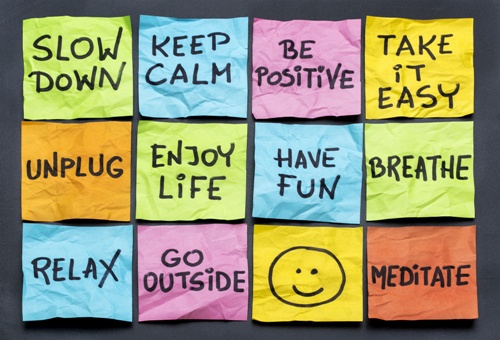
Podcast: Play in new window | Download
In this podcast I’ll be exploring Stress:
- I’ll explain what stress is and the different types of stress
- I’ll talk about how stress affects the body
- Finally, I’ll give practical tips on how to reduce stress in your life
CLICK HERE TO LEARN WHAT ARE THE BEST FOODS TO GET LEAN
Stress is defined as placing pressure or tension on an object. What most people don’t realise is that there is such a thing as good stress. This is called eustress, e-u-stress, eustress. The difference between eustress and stress (or distress) is determined by our own perception of the stress. For example imagine two people riding a rollercoaster. One person experiences stress and the other experiences eustress. While one person experiences pain, anxiety, and worry the other person experiences, pleasure, joy, and excitement. Same pressure. Same tension, but different experiences different perceptions of that stress. One has distress (or stress). The other has eustress.
My point here is that everything that happens to us is not good or bad until we make the choice to make it mean good or bad. So whatever type of stress you are experiencing, keep in the back of your mind that you do have the choice to see this stress as something positive something for you, eustress, or as something negative, distress.
There are three main types of stress and many subtypes of these stressors. The three types of stress are:
- Physical
- Mental and Emotional
- Biochemical and Physiological
Examples of the subtypes of these stressors include electromagnetic stress, nutritional stress, and thermal stress.
Now these three main types of stress can be broken down into two groups. External stressors such as being out in the sun, getting injured, or being exposed to toxic chemicals. Then there’s internal stressors such as having a disease and having an imbalance in your hormones. So an example of a physical stress would be working out at the gym. Having difficult relationships would be an example of a mental and emotional stress. An example of biochemical and physiological stress would be when you come down with the cold or flu and your immune system has to battle the bugs in order to bring the inside of your body back into balance.
So those are the three main types of stress. There’s physical stress, which is normally associated with external stress. There is mental and emotional stress, which can be either external or internal. Then there’s biochemical and physiological stress, which is an internal stressor.
Your body is made up of a system of nerves and the nervous system is broken down into different types. The Autonomic Nervous System (ANS) is the system that looks after your body automatically. It digests, it eliminates, it regulates blood flow, hormone production, temperature, etc. You don’t have to think about doing any of this stuff yourself. These are run by your ANS. Now as you live life and experience different events the ANS can go down either one of two pathways. One pathway is the Sympathetic Nervous System (SNS). The other pathway is the Parasympathetic Nervous System (PNS).
The SNS puts your body into a fight, flight, flee, or freeze state. When activated the SNS releases stress hormones which raise heart rate, blood pressure, and moves the blood from your internal organs to your muscles and limbs. These stress hormones also prevent fat mobilisation and fat metabolism. What does that mean? It means your body stops moving fat out of the fat cells, out of their homes, which means you will not be burning any fat for energy. So much for reducing your waistline hmm.
The PNS on the other hand puts you in a rest, digest, calm, and connect state. The PNS deals with growth, fat-burning, and sex hormones that help keep your heart rate and blood pressure in a healthy range and your blood remains close to your internal organs allowing for your digestion, elimination, growth, repair, and reproductive processes to function normally. Also your body becomes a fat-burning machine.
When you perceive or sense a stress your body goes into short-term breakdown mode (the SNS) in order to help you survive that stressor in that moment. When you perceive that you are safe and secure your body remains in long-term growth and repair mode (the PNS) helping you to live a happy and healthy quality of life.
Now back in the day our ancestors would have dealt with acute (short and sudden) stressors like running from a tiger, but most of their lives were pretty relaxed. Today, however, traffic jams, deadlines, exams, and difficult relationships, these are the tigers of our time. Unfortunately these are not acute experiences. These are chronic, these are ongoing so your body is in constant breakdown mode. Remember the SNS releases stress hormones to help you survive, but these stress hormones are breaking you down and causing you to store fat and when stress hormones are up your growth and sex hormones are down. If you can reduce the amount of stress that you perceive in your life the PNS can be activated more often so you can have your growth and sex hormones higher than your stress hormones. Giving you proper digestion, elimination, and repair, as well as more fat-burning.
Again be aware that any stress you encounter, whether it’s literally being chased by a tiger or being chased by your boss, your body is going to begin breaking down. Your body isn’t going to be able to digest your last meal. Your liver isn’t going to be able to detoxify your blood. Your bowels aren’t going to be able to eliminate the waste. Your mood isn’t happy. Your body isn’t growing or repairing. Your immune system isn’t able to fight off bad bugs. Your body will be storing fat instead of burning it. Your sex drive and your ability to have children is going to be pretty much zero, so no sexy time for you! But if you can reduce the stress in your life, reduce the stress hormones, increase the growth and sex hormones… sexy times are here again my friend.
So that’s how stress affects the body. It’s either going to break you down in order to help you survive or it’s going to help you grow and repair. So how much distress compared to eustress do you have in your life? Something to meditate on.
If you’ve got issues with managing your weight, digestion, elimination, getting over an illness, a nagging chronic pain, migraines, fatigue (if you’re always tired), fertility or sex issues, all of these symptoms plus much more come under too much stress, chronic stress in your life.
There are many ways to reduce stress in your life. There are whole books written on the topic. Two books I recommend are Why Zebras Don’t Get Ulcers and The Tapping Solution.
Personally I reduce stress in many different ways and one of them includes writing down every single perceived stress that I have in my life at the time and out of that list I pick one, just one to focus on and work on reducing its impact on my life. The one stress I pick is the one I think is the most stressing to me in that moment.
So prioritise, figure out what is your primary stressor. Write out a list of all your stresses right now and then pick the one that you think is stressing you out the most. Not the one you think you can deal to the easiest, but the one you perceive to be affecting you the most in your life right now. Highlight it, circle it, underline it, just get it in your mind’s eye. That is what you’re going to focus on.
Next thing I do is I write down all the things about that primary stress that’s actually causing me to stress. So, for example, right now I feel a lot of stress when it comes to time. I feel like there isn’t enough time. I’m unable to finish projects or to finish books that I’m reading. I don’t have enough time to prepare the food that I want to make. I’m feeling pressure and like I’m failing. So that’s what I write down. What is this stress causing me? What is it stopping me from doing that I’d like to be doing? What is it causing me to feel? The reason I do this is so I can understand exactly where I am and how I am doing in that moment. Remember this saying paraphrased from Alice in Wonderland:
“If you don’t know where you are going, any road will get you there.”
You cannot get from A to B if you don’t even know where A is. Your turn. Write down how your primary stressor is affecting you and your life. This is your A, this is where you are now.
Next thing I write down is if I didn’t have this stressor what would my life be like then. For example, if I had all the time in the world I’d finish the projects that I wanted to finish on time when I said I would finish them. I would finish the books that I wanted to read and I would have the time to prepare the food that I wanted to eat. Then I would feel awesome and accomplished. After this step I know now where I want to be and I know how I want to feel so I have a better idea of why I’m doing what I’m doing. This is giving me a why, a reason to manage myself better when it comes to time.
So write down for yourself what would your life be like and how would you feel if your primary stressor was no longer a perceived stress.
What I do next is to plan. How am I going to manage this stress practically and effectively? In terms of time it means making bookings in my Google calendar. I’m going to create separate bookings for project work, reading books, and for preparing meals. Then I have to stick to the calendar and take the necessary action when the booking comes up.
Create a plan for your particular situation. For example, if it’s trying to stick to a diet to reduce your waistline what is it that you’re not doing now that you can do in the future and what might your plan look like? Maybe it’s creating a meal plan and preparing and cooking meals in advance like cooking a whole week’s worth of meals in one day.
So in a nutshell:
- Write down all your stressors
- Identify your primary stressor
- Write down how it’s stressing you out, how it’s affecting your life, how it’s making you feel right now
- Then write down how your life would be and how you’d feel if you didn’t have this stress
- Make a plan
- Finally, be consistent and take action on that plan
[click here to download the WG-Stress Reduction.pdf worksheet]
This is one way I deal with stress and it’s just that one thing, that one stress that I focus on. When I feel like it’s no longer stressing me then it’s back to the list and creating priority number one again.
Now along with this practise you have to be living a healthy holistic lifestyle. Without the right lifestyle factors in place the technique I just mentioned is like a house of cards and it’s only a matter of time before it all comes crashing down. A healthy holistic lifestyle brings stability and strength to every aspect of your life. I’ll go into more detail about what a healthy holistic lifestyle really means in later episodes, but I’ll sum it up here:
- Get good consistent quality sleep
- Move often throughout the day
- Eat whole real foods
- Drink plenty of quality filtered water
- Breathe deep belly breaths and take time out to be with yourself and your breath, and just breathe
- Leg go of resentment in relation to yourself and others
- Get more exposure to Mother Nature especially the sun and the soil
- Dramatically reduce your exposure to toxins
That about sums up living a healthy holistic lifestyle. If you can strive to do all of these things you will successfully reduce the stress in your life long-term.
Links and Resources
- Why Zebras Don’t Get Ulcers — Robert M. Sapolsky
- The Tapping Solution — Nick Ortner
- Stress Reduction Worksheet
Please leave a 5-star iTunes review for the Whole Guidance Podcast
Podcast: Play in new window | Download
Subscribe: iTunes | Stitcher Radio | Android | RSS

Podcast: Play in new window | Download
In this podcast I’ll be exploring what it means to be in an Attitude of Gratitude:
- I’ll explain what gratitude really is
- I’ll also explain why everyone should be practising gratitude in their lives everyday
- Finally I’ll talk about a few different ways to practice being in an attitude of gratitude
CLICK HERE TO LEARN WHAT ARE THE BEST FOODS TO GET LEAN
What is gratitude? Let me read what Professor Google says. The definition of gratitude: “The quality of being thankful; readiness to show appreciation for and to return kindness.” Alright so thanks and appreciation, sounds pretty standard.
Now I like to give these two quotes of what I think gratitude really means.
This is from Melody Beattie:
“Gratitude unlocks the fullness of life. It turns what we have into enough, and more. It turns denial into acceptance, chaos to order, confusion to clarity. It can turn a meal into a feast, a house into a home, a stranger into a friend.”
And this from Wayne Dyer:
“Change the way you look at things and the things you look at will change.”
To me gratitude is about seeing things in a new light, in a different perspective and there’s different ways people express gratitude: blessing and prayer; showing appreciation to people; saying thank you and actually meaning it. Gratitude isn’t so much what you say, it’s how you’re being in that moment that you’re giving thanks and appreciation and being grateful and praying and blessing. I love to say “say what you mean and mean what you say.” You can say thank you and not mean it, but you can BE thankful and there’s no denying what you mean.
That’s what gratitude is. Gratitude is a life skill, a tool to reframe parts of our lives from not that much, from scarcity to more than enough and abundance.
Today we love in a world where everything is pretty much 24/7, plugged in all the time, non-stop. We live in the world of FOMO. FOMO means Fear Of Missing Out. Now I believe that everyone should be practising and dedicating a few minutes a day to being in an attitude of gratitude because that will get rid of your FOMO disease, your FOMO syndrome, your FOMO illness, okay. Remember gratitude is a reframing tool. It helps us s change our perception of things, so where there wasn’t enough now there’s plenty. What we have is plenty. By practising gratitude no longer do you have this fear of missing out because what you have is already enough and it takes time to see things this way, but that’s why you got to practise this. It’s a tool that you use to build a skill that then becomes a habit.
So being in an attitude of gratitude will help you disconnect from this 24/7 online world that we live in currently. Disconnect just enough to bring you into the present moment, to being more mindful and aware of how your thinking, how your feeling, how’s your body going, how’s your mind going, how’s your life going. Right now we are surrounded by so much stimulation that sometimes we don’t know whether we’re coming or going. Just taking time out to say thank you or to give a blessing or to have a prayer, just being grateful for five seconds will bring you to that moment in the present very mindful and aware of how you’re feeling. What sensations are you feeling in your body? What thoughts are running through your mind before you get into that attitude of gratitude and then what thoughts come after?
Gratitude, it’s not just being polite and saying thank you. It’s disconnecting yourself from the confusion that can appear around you. It’s removing the fear of missing out. It’s bringing you to the present moment, increasing your awareness and making you very mindful of how you’re feeling and how you’re doing in the moment. It’s nothing small, it’s quite huge. Grat-ti-tude. One word. Three syllables. Infinite amount of possibilities of how it can change your life.
Now there is no one way to practise being in an attitude of gratitude, okay. Now I like to leave every episode of the Whole Guidance Podcast in an attitude of gratitude. I explained in episode one how I do this personally. So, before bed I give thanks for one person I interacted with that day, one goal that I accomplished, and also another random experience. That’s how I personally do it. Right before bed and I give thanks for those three things.
Now you may want to set a timer, a gratitude reminder. You might want to book something in your calendar. You can set it for every hour. Maybe you can remind yourself to do this at every meal. You might want to do it first thing in the morning after you wake up. You might want to do it before exercise, after exercise, before meditation, after meditation, before bed. You have to find the time and the duration that works for you. My attitude of gratitude practise takes less than 5 minutes for example.
The way you practise gratitude whether it’s a blessing, whether it’s prayer, whether it’s saying ‘thank you, thank you, thank you, thank you, thank you, thank you’ a thousand times in front of a mirror, is up to you. As long as it brings you into the moment and puts a smile on your face you’ll know you’re doing what’s right for you. There’s no one way to do this.
Try this easy 10 second practise. In any moment you have the need to be grateful and this could be anytime it comes to mind (it doesn’t matter whether you’re waiting to cross the road, stuck in traffic, bored at work, stressed at home, waking up, brushing your teeth, taking out the trash) close your eyes if possible and think of someone you’d like to say thank you to and mean it and be sure to have an image of them clearly in your head. This could be a supernatural being or even yourself. Take a deep breath counting four seconds as you breath in and on the out breath say out loud or in your mind ‘thank you’. Also, let out that breath as a huge sigh of relief. Sorted. You just practised being in an attitude of gratitude.
So it doesn’t matter when you do it. It doesn’t matter how you do it. As long as you do it. As long as you can take time out to bring love in. Love? What’s that got to do with gratitude? Well, there’s this book called A Course In Miracles (it’s a pretty beast of a book). It’s about life. This is what ACIM says about gratitude:
“Gratitude goes hand in hand with love, and where one is, the other must be found.”
This has proven to be true time and again in my experience. So I could have called this podcast attitude of love, but it just didn’t sound as good off the tongue. When you’re being in an attitude of gratitude you’re bringing yourself back into love. What I’m saying is that if you can take time out to bring some love in you’ll find yourself feeling less stressful and a lot happier.
Now I would like to hear from you, the beautiful listener. How do you practise being in an attitude of gratitude? Is it weekly, daily, multiple times a day? Do you use prayer or give blessings or do you just say thank you to yourself, to others, to God, to the Universe? How do you do it? Leave your comments [in the comments section below] or leave your comments in an iTunes review. Either way I would love to hear from you.
Links and Resources
Please leave a 5-star iTunes review for the Whole Guidance Podcast
Podcast: Play in new window | Download
Subscribe: iTunes | Stitcher Radio | Android | RSS
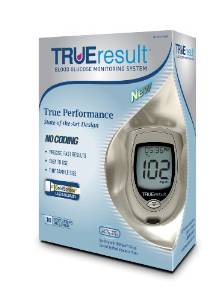
Glucose Meter / Glucometer
(view product page)
Stress is at the root of almost all chronic diseases and the biggest contributor to stress is low-level inflammation within the body. The most common cause of hidden inflammation today is the dysregulation of blood sugar/glucose levels.
There is at most one teaspoon of glucose in the blood of a healthy person. When glucose levels get too high (eg. high consumption of refined/processed sugars) or get too low (eg. from long endurance exercise) the body releases hormones that help balance sugar levels in the blood.
The more times the body is forced to balance blood glucose levels the lees effective it becomes at doing the job. Eventually the body is unable to perform this balancing act 100% of the time and this leads to inflammation, tiredness, illness, disease, and finally death.
If there is one tool that every single person whether they be suffering an illness or not could use to take control of their health it would be a glucometer.
Disclaimer: This page contains affiliate links that may provide monetary compensation to help support the Whole Guidance Vision of Creating a Happy and Healthy Planet should you make a purchase. We very much appreciate and thank you for your support.

Thermometer
(view product page)
Most people use thermometers after sickness has already taken hold as a way to measure and monitor the healing process.
Another way to use a thermometer is to measure one’s potential metabolic rate and thyroid function.
By measuring body temperature upon waking for one week and taking the average value and comparing this to a normal body temperature of 37.0°C/98.6°F you can get a good indication of whether your metabolism is downregulated (below 37.0°C) or upregulated (above 37.0°C).
If below or above normal temperature and with other correlating symptoms of disease this can help better inform a decision to visit a health practitioner for proper thyroid hormone testing.
Disclaimer: This page contains affiliate links that may provide monetary compensation to help support the Whole Guidance Vision of Creating a Happy and Healthy Planet should you make a purchase. We very much appreciate and thank you for your support.
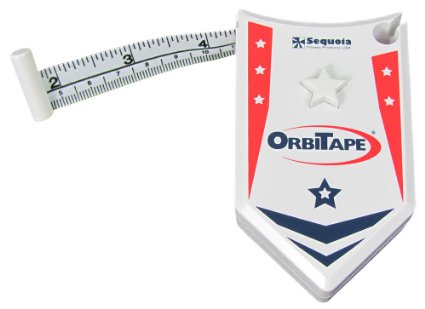
Measuring Tape
(view product page)
Measuring tape is the most basic of all biofeedback tools and is also a lot more informative than a bodyweight scale.
A bodyweight scale gives you a reading of your total bodyweight including fat, muscle, water, and bone. You may be happy to see the scale go down, but what if you lost muscle or if it turns out to be water loss only. On the other hand you may frown if the scale goes up, but what if you gained muscle or are retaining more water than usual?
A measuring tape on the other hand gives you a clearer picture on your body composition by way of being able to measure many different areas of the body. By measuring your height, hips, waist, legs, arms, and neck you can calculate whether it’s muscle or fat that is making up most of your body composition.
The best two measurements that help determine your risk for inflammation issues, diabetes, heart disease, or stroke include your height-to-waist ratio and your waist-to-hip ratio. To calculate height:waist ratio take your height in inches or centimetres and divide by your waist using the same unit of measure. To calculate waist:hip ratio take your waist in inches or centimetres and divide by your hips using the same unit of measure.
Ideally you want your ht:wst to be at least 2:1 and your wst:hp to be a maximum of 0.94:1.
Disclaimer: This page contains affiliate links that may provide monetary compensation to help support the Whole Guidance Vision of Creating a Happy and Healthy Planet should you make a purchase. We very much appreciate and thank you for your support.

HeartMath Heart Intelligence Training
(view product page)
HeartMath is recognized as one of the world’s foremost authorities on emotional physiology, stress and optimal performance. Through their innovative technology they provide practical, scientifically validated methods that enable people to live more rewarding, healthy and productive lives personally and professionally. HeartMath have achieved global recognition for their groundbreaking products and services that have been proven to increase productivity while reducing the stress associated with living and working in this era of high-speed change.
The award winning emWave® and Inner Balance™ technology products from HeartMath offer a drug-free solution to stress, anxiety, depression, and more.
Used just a few minutes a day, this simple-to-use technology helps you transform feelings of anger, anxiety or frustration into more peace, ease and clarity.
For athletes and individuals training for health, HeartMath technology will give you a snapshot of your nervous system’s stress state indicating whether your body is ready for another hard high intensity workout or if you should take it easy with low intensity movements such as yoga, stretching, and massage.
Learn how to train your body to remain in a stress-free state even in the presence of perceived stress.
Disclaimer: This page contains affiliate links that may provide monetary compensation to help support the Whole Guidance Vision of Creating a Happy and Healthy Planet should you make a purchase. We very much appreciate and thank you for your support.
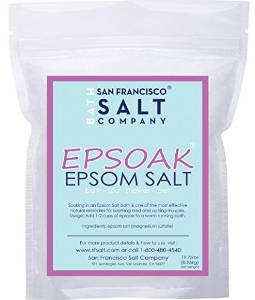
Epsom Salt
(view product page)
Containing two very critical nutrients that are not easily absorbed from food when eaten, magnesium and sulfur, soaking in epsom salts allows better absorption through the skin.
Taking epsom salt baths also draws out toxins from the body via the skin and helps ease muscle pain.
Disclaimer: This page contains affiliate links that may provide monetary compensation to help support the Whole Guidance Vision of Creating a Happy and Healthy Planet should you make a purchase. We very much appreciate and thank you for your support.
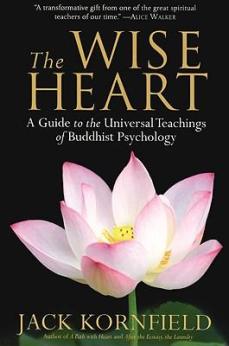
The Wise Heart – Jack Kornfield
(Buy from Amazon; Buy from The Book Depository)
Experience the Transformational Power of Buddhism’s Psychology of the Heart with Bestselling Author Jack Kornfield.
You have within you unlimited capacities for extraordinary love, for joy, for communion with life, and for unshakable freedom—and here is how to awaken them. In The Wise Heart, celebrated author and psychologist Jack Kornfield offers the most accessible, comprehensive, and illuminating guide to Buddhist psychology ever published in the West. For meditators and mental health professionals, Buddhists and non-Buddhists alike, here is a vision of radiant human dignity, a journey to the highest expression of human possibility—and a practical path for realizing it in our own lives.
Disclaimer: This page contains affiliate links that may provide monetary compensation to help support the Whole Guidance Vision of Creating a Happy and Healthy Planet should you make a purchase. We very much appreciate and thank you for your support.
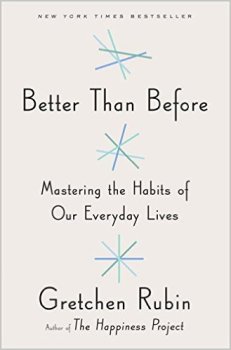
Better Than Before – Gretchen Rubin
(Buy from Amazon; Buy from The Book Depository)
The author of the blockbuster New York Times bestsellers, The Happiness Project and Happier at Home, tackles the critical question: How do we change?
Gretchen Rubin’s answer: through habits. Habits are the invisible architecture of everyday life. It takes work to make a habit, but once that habit is set, we can harness the energy of habits to build happier, stronger, more productive lives.
So if habits are a key to change, then what we really need to know is: How do we change our habits?
Better than Before answers that question. It presents a practical, concrete framework to allow readers to understand their habits—and to change them for good. Infused with Rubin’s compelling voice, rigorous research, and easy humor, and packed with vivid stories of lives transformed, Better than Before explains the (sometimes counter-intuitive) core principles of habit formation.
Along the way, Rubin uses herself as guinea pig, tests her theories on family and friends, and answers readers’ most pressing questions—oddly, questions that other writers and researchers tend to ignore:
• Why do I find it tough to create a habit for something I love to do?
• Sometimes I can change a habit overnight, and sometimes I can’t change a habit, no matter how hard I try. Why?
• How quickly can I change a habit?
• What can I do to make sure I stick to a new habit?
• How can I help someone else change a habit?
• Why can I keep habits that benefit others, but can’t make habits that are just for me?
Whether readers want to get more sleep, stop checking their devices, maintain a healthy weight, or finish an important project, habits make change possible. Reading just a few chapters of Better Than Before will make readers eager to start work on their own habits—even before they’ve finished the book.
Disclaimer: This page contains affiliate links that may provide monetary compensation to help support the Whole Guidance Vision of Creating a Happy and Healthy Planet should you make a purchase. We very much appreciate and thank you for your support.
